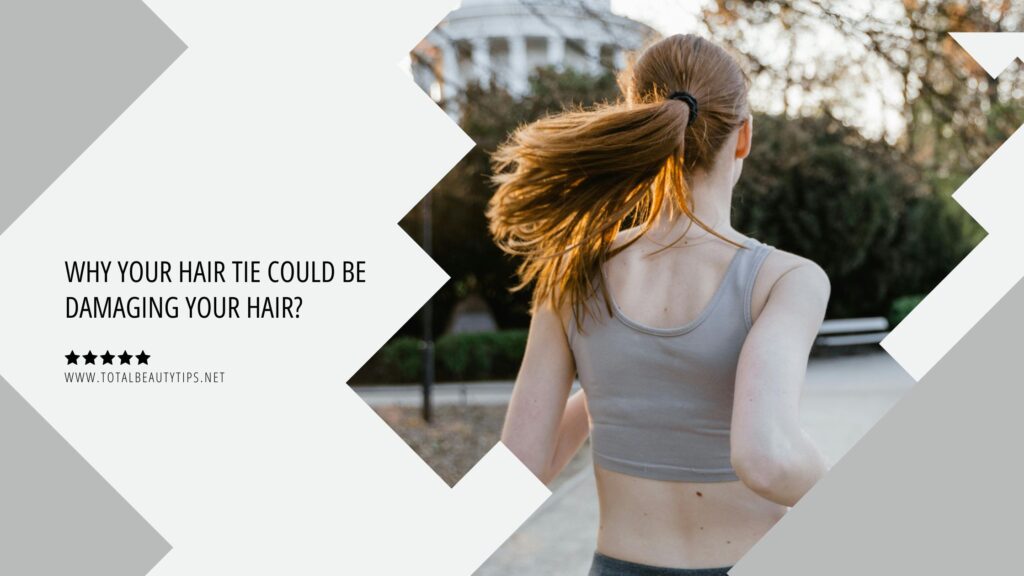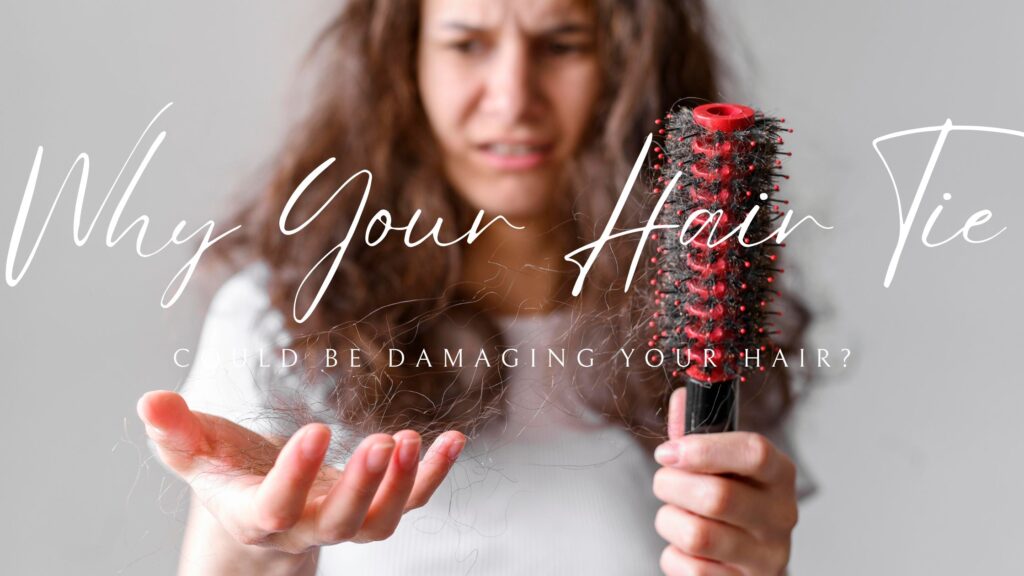
Do you rely on hair tie or rubber bands to keep your hair in place? They’re essential for managing your hair during workouts or on windy days, and they help create everything from sleek ponytails to intricate updos. However, these seemingly harmless accessories might be causing more harm than you think.Often, the damage caused by hair ties goes unnoticed. Let’s break it down.
Picture this: you’re getting ready for the day, securing your hair in a ponytail or bun with your go-to hair tie. It feels snug and perfect. But with each pull and twist, your hair is silently suffering. Hair tie breakage is a genuine concern. Many hair ties and rubber bands are made of elastic materials that, when stretched repeatedly, can weaken your hair shafts. This is especially problematic if your hair is already fragile or prone to damage. Additionally, these accessories can put excessive pressure on your scalp and hair follicles. This can lead to hair follicle damage, hair thinning, and even hair loss in severe cases. So, that tight ponytail or bun might be causing more harm than you realize.
In this detailed exploration, we’ll delve into how hair ties can damage your hair and what you can do to protect it.
Can tight hair ties really damage your hair?
Hair ties, those everyday essentials, might seem harmless but can actually damage your hair. If you’ve ever wondered, “Can tight hair ties cause hair damage?” here’s how these simple accessories can lead to hair problems:Elastic Material: Most hair ties are made from elastic materials that offer a good grip but also pose a risk. The repeated stretching and pulling can weaken individual hair shafts over time, leading to breakage. Pressure on Hair Follicles: Tight hair ties can put undue pressure on your scalp and hair follicles, potentially causing hair thinning and even hair loss in extreme cases.
Scalp Stress
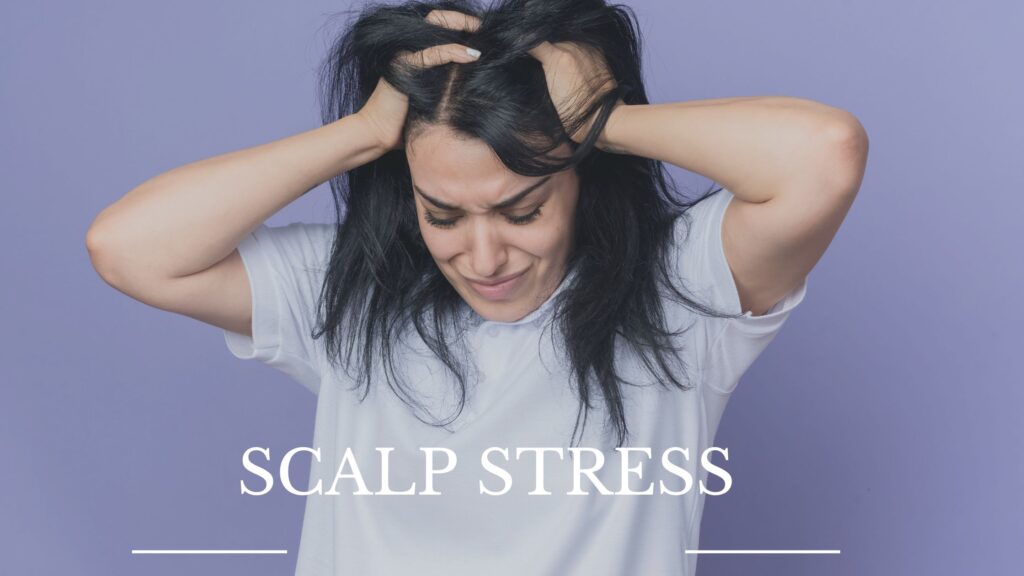
The stress from tight hair ties doesn’t just affect the hair itself; it extends to your scalp and hair follicles. The constant tension can irritate and damage these areas, leading to discomfort and even dandruff. Wearing a tight ponytail or bun for long periods can make your scalp tender and sore.
Hair Breakage
Think of your hair as delicate threads. Each time you twist a hair tie around your ponytail, it’s like tugging at those threads. Over time, they fray and snap, leading to split ends and hair breakage. This is especially true with elastic hair ties, which can weaken the hair shafts with repeated stretching and pulling.
Thinning and Hair Loss
The cumulative effect of hair breakage, scalp stress, and follicle stress can lead to noticeable hair thinning and, in extreme cases, hair loss. So, those sleek ponytails and chic buns might come at the cost of your hair’s health.
Hair Follicle Stress
Tight hair ties can also pull at your hair follicles, causing irritation and stress. This can result in hair thinning, as the follicles struggle to maintain healthy hair growth under constant pressure. In severe cases, this stress can even lead to hair loss.
Weakened hair shaft
When you secure your hair too tightly with bands, you put immense stress on your hair strands. This stress weakens the hair shaft, making it more susceptible to breakage. Over time, you may notice frustrating split ends and brittle sections.
Protecting Your Hair with Hair-Friendly Accessories
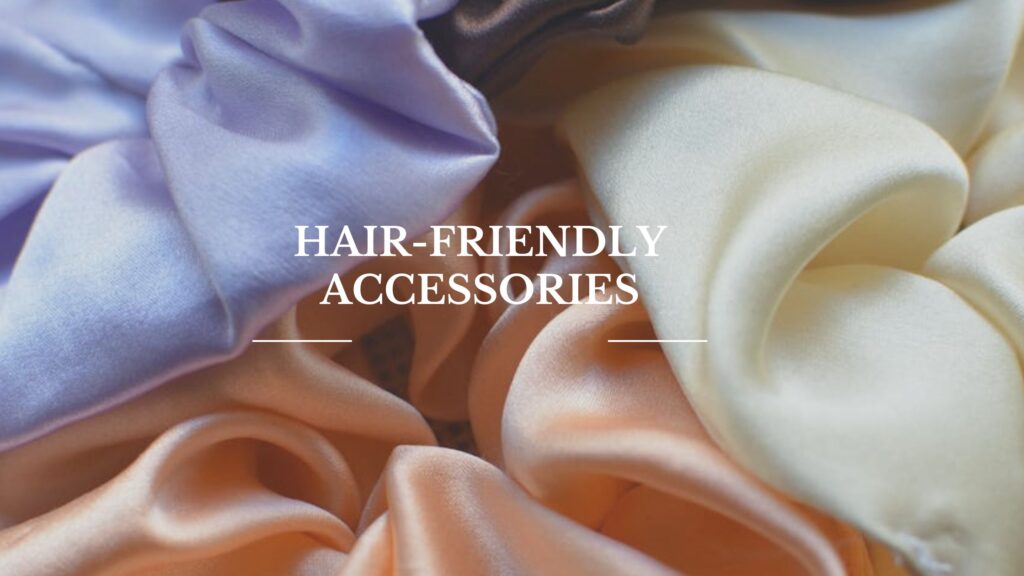
If you’re worried about the damage caused by traditional hair ties, there are alternatives that prioritize hair health.Scrunchies are a great choice. Made from softer materials like cotton or silk, they reduce the risk of breakage and irritation. Scrunchies offer a secure hold without the tightness of regular hair ties.Spiral-shaped hair ties evenly distribute pressure across your hair, minimizing stress on strands. Plus, they’re less likely to leave behind a hair tie crease.
Signs of Hair Damage
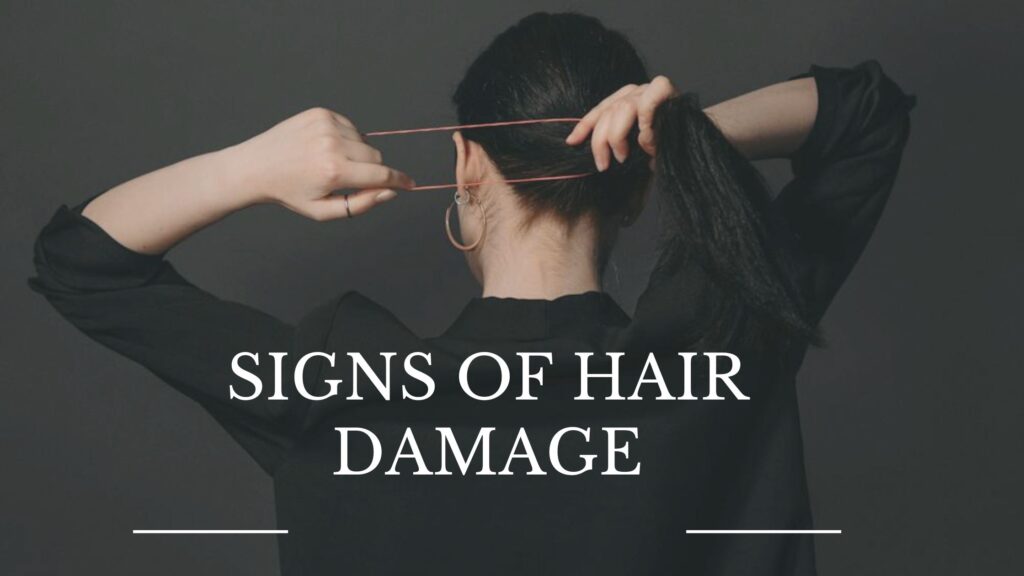
Hair accessories and damage often go hand in hand, but how can you tell if your hair has fallen victim to the clutches of hair ties and rubber bands? Look out for these signs of hair damage:
Hair Loss
In severe cases, constant use of tight hair ties can lead to hair loss, known as traction alopecia. This condition occurs when the hair follicles become so damaged that they can no longer produce new hair, resulting in permanent hair loss.
Hair Breakage
Hair breakage, often characterized by short, broken strands of hair, can result from the constant tension caused by tight hair ties. This is particularly common around the hairline and crown of your head, where hair ties are typically secured.
Split Ends
Frequent use of tight hair ties can lead to split ends, a common hair woe. These splits occur at the tips of your hair and can travel up the shaft if left untreated, making your hair look frayed and unhealthy.
Thinning Hair
If you notice your hair is thinning, it could be due to the stress placed on your hair follicles by tight hair accessories. Thinning hair is a concerning sign and should not be ignored, as it indicates your follicles are under strain.
Hair Care and Maintenance:
Now that you’re aware of the potential damage caused by hair ties and rubber bands, let’s explore ways to protect your locks and maintain healthy hair.
Use Heatless Styling
Minimize the use of heat styling tools like straighteners and curling irons, as they can further weaken your hair. Instead, explore heatless styling methods to achieve your desired look.
Choose Hair-Friendly Accessories
Opt for scrunchies, Invisibobbles, or hairpins with protective coatings. These alternatives are gentler on your hair and less likely to cause damage. By selecting accessories that prioritize hair health, you can minimize the risk of breakage and maintain stronger, healthier locks.
Regular Trims
Schedule regular trims to eliminate split ends and prevent them from traveling up your hair shaft. This routine helps maintain the overall health and appearance of your hair, reducing breakage and promoting stronger, more resilient strands. Regular trimming is a simple yet effective way to keep your hair looking its best.
Avoid Tight Hairstyles
Embrace loose hairstyles whenever possible. Give your hair a break from tight ponytails and buns to reduce tension and stress on your strands. This simple change can help prevent hair breakage and keep your hair healthier in the long run.
Moisturize and Condition
Keep your hair well-hydrated by using a quality conditioner and occasional deep conditioning treatments. Well-moisturized hair is less prone to breakage, helping maintain its strength and elasticity.By making these simple adjustments, you can reduce the risk of hair damage and maintain healthier, stronger hair.
FAQ:
Is My Hair Suffering from Hair Ties and Rubber Bands?
Look for red flags like split ends, hair breakage, thinning, or hair loss. If you spot these, your accessories might be culprits. Switch to gentler alternatives and revamp your hair care routine.
Are Hair Ties and Rubber Bands Culprits for Hair Breakage?
Absolutely. They exert tension and friction, weakening hair strands. Tight usage or low-quality options heighten the risk. Opt for hair-friendly alternatives to curb breakage.
Which Hair Ties are Hair-Friendly?
Consider Scrunchies and Invisibobbles. Scrunchies boast soft materials, minimizing breakage. Invisibobbles evenly distribute pressure, easing stress on hair. These options are secure without suffocating your locks.
